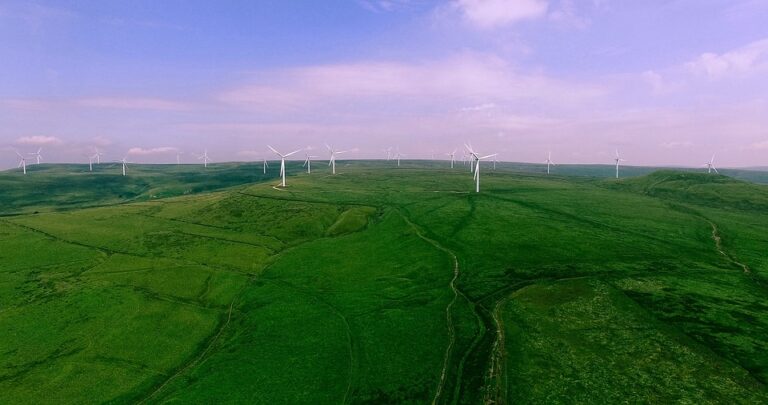Revolutionizing Sustainability: How Green Technology is Shaping Our Future
In a world increasingly aware of environmental challenges, green technology emerges as a transformative force. This innovative field encompasses a range of technologies aimed at reducing pollution, minimizing waste, and promoting sustainable practices. As global consciousness around sustainability deepens, understanding how green technology shapes our future is imperative. This article explores how green technology is revolutionizing sustainability, impacting industries, and influencing changes in lifestyle.
What is Green Technology?
Green technology, also known as sustainable technology, refers to products and services designed to mitigate or reverse environmental damage. From renewable energy sources like solar and wind power to sustainable agricultural practices, green technology encompasses a wide variety of solutions intended to create a cleaner, healthier planet.
Current Industry Trends
Recent reports indicate a significant shift towards green technology. According to a report from the International Renewable Energy Agency (IRENA), global renewable energy capacity reached a record 3,064 gigawatts in 2022, marking a growth of 9.6% compared to the previous year. This trend underscores the increasing reliance on sustainable energy sources as industries and governments commit to reducing carbon emissions.
Another compelling statistic shows that the global green technology and sustainability market is projected to reach $74.64 billion by 2026, growing at a CAGR of 25.9% from 2021 to 2026. This surge reflects both consumer demand for eco-friendly practices and corporate accountability in pursuing sustainable initiatives.
The Role of Green Technology in Various Sectors
Energy Sector Innovations
One of the most impactful applications of green technology is in the energy sector. Solar panels, wind turbines, and energy storage solutions are not only revolutionizing how we produce energy but also how we consume it. For instance, advancements in battery technology have made it possible to store excess energy generated by renewable sources, ensuring that energy is available even when the sun isn’t shining, or the wind isn’t blowing.
Example: Smart Grids
Smart grids are a prime example of green technology at work. They utilize digital communications technology to detect and react to local changes in usage, enhancing the efficiency of electricity distribution. Through smart meters, homeowners can monitor their energy consumption in real time, leading to more conscious energy use and reducing overall demand.
Transportation Transformation
Transportation is another sector undergoing radical changes through green technology. Electric vehicles (EVs) represent a significant leap towards reducing carbon footprints in transportation. As of 2022, global EV sales reached approximately 10 million units, demonstrating a complete transformation in consumer preference towards greener alternatives.
Analogy: The Shift from Horses to Cars
The transition from gasoline-powered vehicles to electric cars can be likened to the historical shift from horse-drawn carriages to the automobile. Just as cars revolutionized travel a century ago, electric vehicles are now reshaping the future of mobility with efficiency and environmental responsibility at the forefront.
Agricultural Advancements
In the agriculture sector, green technology fosters sustainable farming methods. Techniques such as precision agriculture, which utilizes GPS and IoT sensors, enable farmers to optimize resource use, minimize waste, and enhance crop yields. By applying these innovations, farmers contribute to food security while protecting the environment.
The Impact on Daily Life
The influence of green technology extends beyond industry; it is reshaping daily life for individuals. Smart home devices, such as energy-efficient appliances and smart thermostats, allow consumers to reduce energy consumption easily. Furthermore, the rise of urban gardens and vertical farming speaks to the growing inclination towards environmental consciousness in food production.
Challenges and Opportunities
While green technology holds great promise, it is not without challenges. Adoption costs, regulatory barriers, and the need for consumer awareness pose obstacles to widespread implementation. However, these challenges present opportunities for innovation and collaboration across sectors, driving the green technology industry’s growth.
To address these challenges:
- Invest in Research and Development: Continuous innovation is needed to improve existing technologies.
- Encourage Public and Private Partnerships: Collaboration can facilitate resource sharing and reduce costs.
- Raise Awareness: Educational campaigns can increase consumer knowledge about sustainable practices, promoting wider acceptance of green technologies.
Conclusion: A Sustainable Future Awaits
As the world navigates the pressing issue of climate change, green technology offers a beacon of hope. By embracing innovative solutions across various sectors, we can reduce our ecological footprints, foster economic growth, and create a sustainable future for generations to come. The shift towards sustainability is not just a trend; it is a revolution that is shaping our reality.
For more insights on sustainability, check out these articles on Buzzo.live: The Future of Renewable Energy and Sustainable Living Tips for Everyone. Additionally, for a deeper dive into the statistics and trends in green technology, visit the International Renewable Energy Agency (IRENA) here.
Suggested Images:
-
Image of Solar Panels
Alt text: Solar panels representing green technology in renewable energy.
- Image of Electric Vehicles
Alt text: Electric vehicles showcasing the advancement of green technology in transportation.


